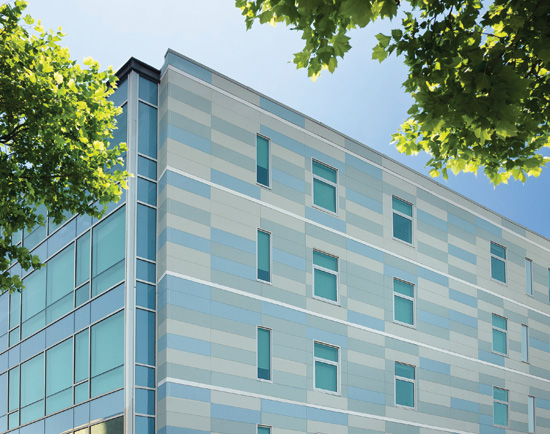Design Innovations Using Fiber Cement in Commercial Construction
Learning Objectives:
- Identify and recognize the innovative characteristics of fiber cement products used in commercial buildings.
- Compare and contrast the differences between residential fiber cement siding and commercial fiber cement architectural wall panels.
- Assess the performance of commercial fiber cement products as they relate to code and testing requirements.
- Specify fiber cement products in a variety of building situations and make appropriate selections related to specific building types.
Credits:
The design of commercial buildings requires that high performance becomes married with great aesthetics. Increasingly, both must be done while containing the material, labor, and installation costs of products used. One very visible and increasingly important area that has received a lot of attention in all of these regards is exterior cladding. While many different choices abound with varying degrees of weight, thickness, and ease of installation, one product has emerged as a very appealing solution in many cases. Architectural wall panels made from fiber cement have a proven history of allowing architects to create building exteriors that are innovative, affordable, sustainable, and able to create a variety of aesthetic design appearances.
Fiber Cement Products Overview
Fiber cement is, in simplest terms, a composite material that combines fibrous material with a portland cement binder to create a strong, dense product. It grew from a need to create a durable, lightweight, and affordable building product as an alternative to heavier and bulkier choices. In the early 1900s, some of the first products were developed in Europe combining paper-making technology with portland cement and asbestos. Its first application was for lightweight, fireproof roofing panels instead of the traditional terra cotta tiles common throughout Europe. In time, this technology produced siding panels and shingles that were introduced into the U.S. in the mid-20th century mostly for residential buildings. The growing concerns about asbestos, however, slowed their use until some alternatives were found. During the 1970s, fiber cement products were developed in Japan based on successes in manufacturing composite hardboard products without using asbestos-containing materials. These products and those created by other manufacturers have been offered in the U.S. for several decades and have become recognized as a safe, innovative, and even sustainable green building product.

Fiber cement architectural wall panels are an advanced product compared to residential fiber cement siding and offer a full range of performance, aesthetic, and cost solutions.

Photos courtesy of Nichiha USA, Inc.
Fiber cement panels can be finished to be smooth or textured to provide an appearance of stone, wood, or other materials.









